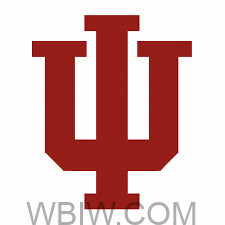
BLOOMINGTON – Indiana University President Pamela Whitten, Julie Payne-Kirchmeier, Vice President for Student Success, Russell J. Mumper, Vice President for Research, and Michael Huber, Vice President for University Relations released an update on the achievements made and advancing the goals for the college’s 2030 strategic plan.

“As we come to the end of the fall semester, we write to update you and celebrate the remarkable progress achieved thanks to countless efforts that are boldly advancing the goals and objectives of our IU 2030 strategic plan,” Whitten added. “Together, we have catalyzed new initiatives, fostered new partnerships, and sparked new investments that will prove to be transformational for Indiana University and the communities we serve.”
According to Whitten, here are just a few initiatives that reflect the scope and scale of progress achieved thus far:
- Student Success and Opportunity: We are building an array of new supports to advance degree completion and academic success. With the announcement of IU’s plans to launch a comprehensive online student success platform, we’re streamlining how students register for classes and plan their paths at IU. To drive personalized student support, we have significantly expanded the ranks of IU’s student success coaches through a generous grant from the Indiana Commission for Higher Education. Additionally, we have officially extended the Groups Scholars Program to our five regional campuses, and—in an effort funded by the Gates Foundation—our regional campuses have joined a multi-year initiative that will strengthen our efforts to close equity gaps across the university. Together, these initiatives are helping ensure all students succeed and thrive at IU.
- Transformational Research and Creativity: In just the past few months, we launched two new cutting-edge research institutes at IU Indianapolis, announced new investments in biosciences research university-wide, and significantly expanded our efforts to spur microelectronics research and bolster the semiconductor workforce. In addition, we appointed new leadership and added support for arts and humanities research and creative activity, to further strengthen the university’s reputation as a global leader in the arts and humanities. Together, these investments are part of our commitment to expand the real-world impact of IU discoveries and grow external funding. In the first quarter of the academic year, faculty have secured more than $320 million in sponsored awards across a diverse array of disciplines, driving research that is meeting the needs of Hoosiers and targeting solutions for many of society’s most pressing challenges.
- Service to the State and Beyond: In addition to strengthening our research enterprise, the new IU initiatives in biosciences and microelectronics are also shaping critical talent pipelines and helping significantly expand IU’s partnership with industry. This progress stands alongside the work of IU Innovates, which launched this semester and is strengthening IU’s support for student and faculty entrepreneurs. Additionally, IU’s continued collaboration with the Indiana Economic Development Corporation is playing a critical role in engaging foreign trade commissioners, attracting new industry to Indiana, and strengthening the state’s relationships with global partners and companies. Lastly, the IU Center for Global Health Equity is leveraging its renowned AMPATH program to improve health outcomes here in Indiana.
“Across IU, our strategic plan is powering significant advancements and demonstrating progress toward our goals in all three pillars – from student success initiatives to the expansion of our research enterprise and innovative approaches to best serve our state and beyond. Made possible thanks to the hard work, creativity, and determination of our faculty and staff university-wide, Indiana, the nation, and the world will be the beneficiaries of the extraordinary impact of IU 2030.”
If the progress achieved this semester is any indication, IU officials cannot wait to see what the coming year brings.



